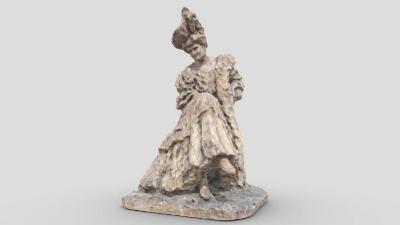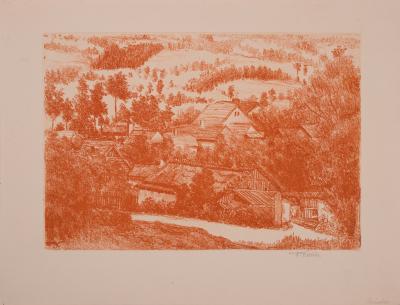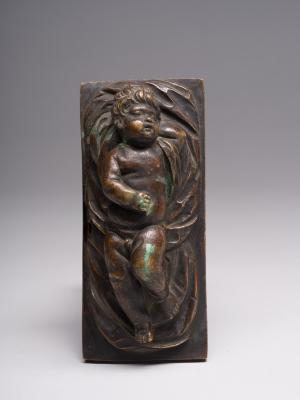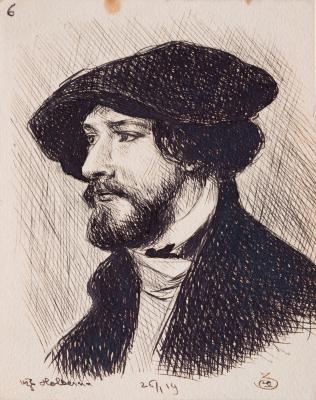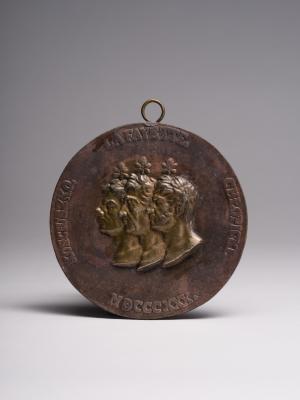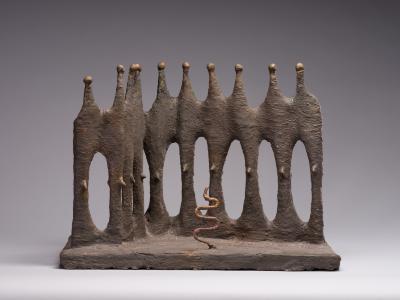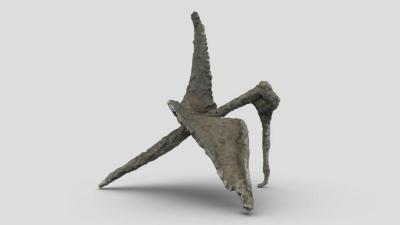The work is from the Roman series. The first version of the composition is known from the album Raccolta di Cinquanta Costumi Pittoreschi (Collection of Fifty Picturesque Costumes), published in 1809. The second version of the composition in a slightly modified form is known from the album Costumi di Tivoli, issued in 1815. In the first two versions, the author paid more attention to details in the image of figures and architectural fragments. The third version, representing a black and white engraving, was similar to the Lviv composition. It was issued in the album Nuova Raccolta di Cinquanta Costumi Pittoreschi (New Collection of Fifty Picturesque Costumes), published by Giovanni Scudellari in Rome in 1817. In 1826, Roman graphic artist Ferrari Filipo used the engraving by B. Pinelli to depict the image of a woman from Cerbara. The Lviv version belongs to the third simpler version. In the foreground, one can see four figures: two women, a child, and a young shepherd. One of the women is standing on the right, with a jar of water on her head and her arms crossed over her chest; the other is sitting on a rock on the left; she also has a jar of water. A small girl approached her, willing to drink some water. The young man sits nearby, leaning on a stick and looking at a young mother and daughter. To the right of the stone reservoir, one can see a stream depicted in more detail in the previous versions of the engraving. The women wear bright national clothes. One woman is dressed in a colourful yellow and blue dress with an ornamented apron and a long blue skirt. A white flattop headscarf is on her head; on her feet are ciocie. The other woman is wearing the same headscarf, a dress, and a crimson skirt. The girl is dressed in a yellow skirt. The boy is wearing a blue jacket and red trousers; he has a hat on his head. The background with a mountain range, a fragment of the city and trees is presented in blurred blue and green tones.
Cerbara is a place in the Marche region (formerly part of the Papal States), northeast of Rome.












